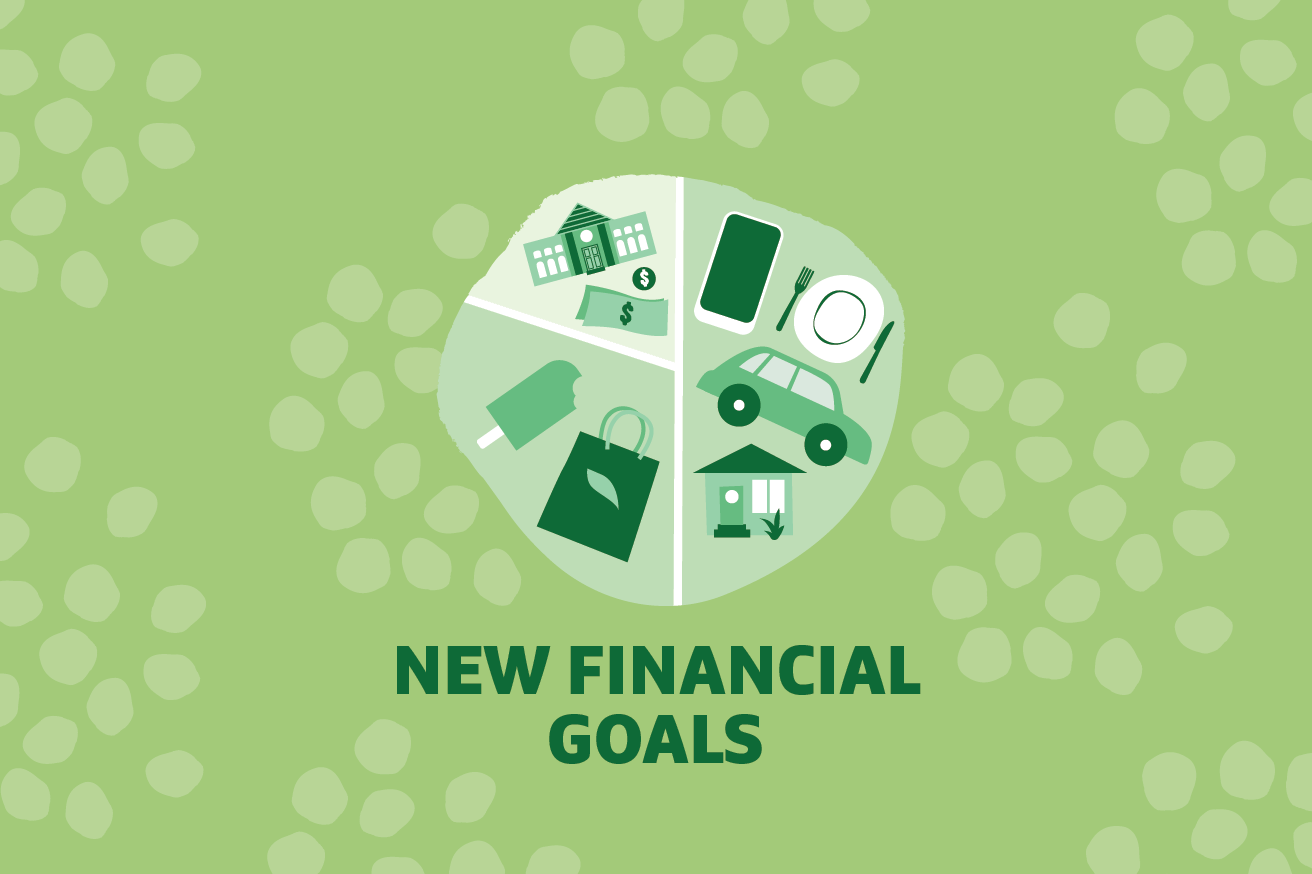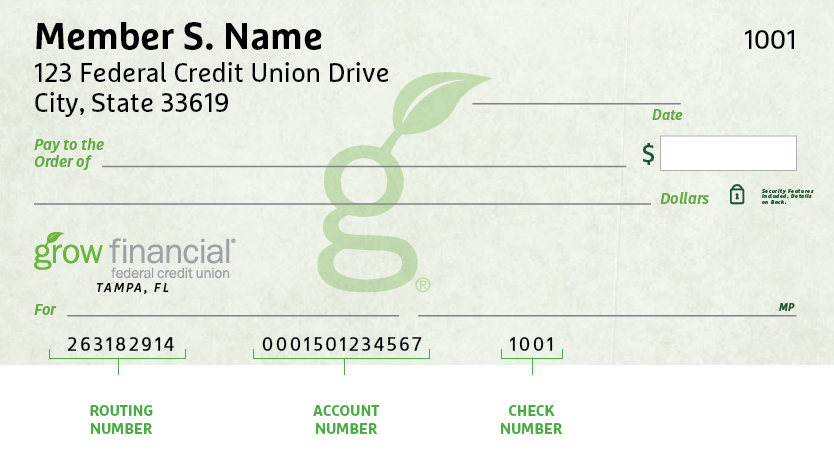- Personal
- Membership
- Membership
- Rates & Fees
- Checking
- Checking
- Personal Loans
- Personal Loans
- Wealth Management
- Investment Services
- Financial Advisors
- Resource Center
- Business

January 14, 2021
Three Financial Goals You Need to Set in 2021
The turn of the calendar into a new year reminds us to do some reflection and goal setting for the future. There’s no better time to consider your financial plan and make new commitments to yourself and your goals. You already know we like to dispense advice about budgeting, saving, retirement, credit and lots more under the financial sun. This time, we’re hitting you with three, specific financial goals that you can take action on right now, no matter where you are on your financial journey.
1. Use the 50/30/20 budgeting method.
We’ve said it before, and we’ll probably say it again: everyone should have a budget. There are many different ways to budget, such as the envelope method and the zero balance budget (both explained here). For beginners especially, we recommend trying the 50/30/20 method, which is a great way to get yourself into the budgeting mindset.
With this budgeting strategy, you’ll plan for 50% of your income to be used on essentials, like rent or mortgage, groceries, utilities, insurance and transportation. These are the non-negotiable costs of living that need to be prioritized first in your budget. Next, you’ll allot 30% for wants, otherwise known as discretionary spending. Think hobbies, entertainment, dining out or other indulgences, like technology upgrades. Giving yourself a reasonable amount for the fun stuff lets you enjoy life without feeling stifled. Lastly, you’ll use 20% of your income to pay down debt and save for the future. Using this percentage breakdown, you will be able to work toward your financial goals, while developing good financial discipline. If you decide you’re comfortable reducing discretionary spending even lower than 30%, you can shift more money toward savings and debt repayment. That brings us to goal number two.
2. Up your saving by 5%.
Now, we’ve just advised above that you create a budget that puts at least 20% toward saving and paying off debt. The unique combination will be up to you, depending on your current debt level and savings goals, but don’t feel like you have to wait until you’re 100% debt-free to start saving. In fact, when it comes to saving, especially for retirement, time is your biggest asset. Once you’ve got an emergency fund that would cover 3-6 months of expenses available in a liquid savings account, you should focus on saving for longer-term financial goals, including retirement. If you haven’t opened an IRA or other retirement account, consider opening one this year. (Learn more about retirement account options.) Remember, everyone starts somewhere. If you can’t raise your saving by 5% yet, start by raising it just 1% and increase over time.
3. Use the avalanche method to tackle high-interest debt.
You may have heard of the snowball method for repaying debt, which involves paying off the smallest balances first (in addition to making the required minimum payments on all other debts, of course) to train yourself into a debt-repayment mindset, then “snowballing” toward paying the larger balances. That method can work for some people, particularly if seeing a zero-balance on a bill will encourage you and fuel your savings mentality.
We suggest a more aggressive method: the avalanche method. This involves paying off the balances with the highest interest rates first. That way, you’ll pay less in total over the life of your loans because you’ll cut down on compounding interest. Something else we suggest? Consolidate the higher-interest debt to a lower rate wherever possible, which may involve taking out a personal loan or utilizing balance transfers to move debt. (Learn more about balance transfers at Grow.)
We hope you’ll consider some or all of these goals as part of your financial strategy. Cheers to leveling up your finances in 2021!
We look forward to continuing to share advice and information to promote financial literacy for our members and community. Do you have a topic you’d like to see covered? Let us know by messaging us on Facebook or Instagram! We’d love to hear your input.
Posted In:
How to Find Your Routing & Account Numbers
When you make a payment online, by phone or on a mobile device, you may be asked for our routing number and your checking account number. Credit unions and banks use these numbers to identify accounts and make sure money gets where it’s supposed to be. You’ll also need to provide your routing and checking account numbers for:
- Direct deposits
- Electronic checks
- Military allotments
- Wire transfers
Where to Find Your Routing & Checking Account Numbers
Your personal checks include both our routing number and your account number, as shown on the Grow check example below.

Don’t have a Grow check? No worries.
Visit any Grow store and ask for a Direct Deposit Form. It lists both your routing number and checking account number.
Making a Loan Payment
Incorrect Phone Number Alert
We’ve identified an incorrect phone number listed in a letter sent to a select group of new members with auto loans. The incorrect number is NOT affiliated with Grow. Please be sure to use our official phone number, 800.839.6328, which you can verify on our Contact Information page. For your security, keep your personal information safe and avoid sharing it over the phone, email or text message. We will never ask you for your credit or debit card security code, expiration date or PIN, login security codes, or your online banking password.
When it comes to making payments, we try to make it as painless as possible to pay your loan every month. We have several different ways to pay, including convenient online options.
Pay Online
You have two ways to pay online by transferring funds from another bank or credit union.
- Grow Online Banking (Preferred payment method for any loan)
This is the simplest way to pay your loan. You can make one-time payments or set up automatic recurring payments in Grow Online Banking. Once you log in, select “Transfer/Payments” from the menu. If you’re not enrolled in Grow Online Banking yet, you can set up your account in just a few minutes.
Log In
- Debit Card or ACH (Available for auto, personal loans and HELOCs)
Note: ACH and debit card payments are not available for credit cards or most mortgages, except HELOCs.
We accept ACH payments with no additional fees, consumer Mastercard® and Visa® debit cards with a convenience fee of $4.95, or commercial Mastercard® and Visa® debit cards with a convenience fee of 2.95% of the payment amount. To get started with an online ACH or debit card payment, select Pay Now below.
Pay Now
Pay by Mail
You can also pay any Grow loan by check through the mail. Please remember to include your account number and Grow loan number on the check. (For credit card payments, please do not write your 16-digit credit card number on the check, which can cause a delay in processing the payment.)
Address for auto, credit card, personal loan and HELOC payments:
Grow Financial Federal Credit Union
P.O. Box 75466
Chicago, IL 60675-5466Address for personal first or second mortgages and home equity payments:
Grow Financial Federal Credit Union
P.O. Box 11733
Newark, NJ 07101-4733You Are About To Leave GrowFinancial.org
At certain places on this site, there are links to other websites. Grow Financial Federal Credit Union does not endorse, approve, represent, certify or control those external sites. The credit union does not guarantee the accuracy, completeness, efficacy, timeliness or accurate sequencing of the information contained on them. You will not be represented by Grow Financial Federal Credit Union if you enter into a transaction. Privacy and security policies may differ from those practiced by the credit union. Click CONTINUE if you wish to proceed.
